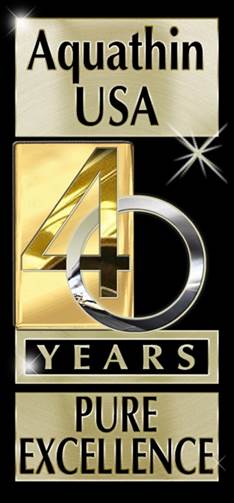Oil Spill Decimated Galapagos Iguanas
"Aquathin OP-ED Commentary"
This quick read article discusses the affects of low dose contamination to our environment. Make no mistake the oil spill was a large tragedy. But you will read that contact with small amounts of contamination have harrowing results. Oil spills anywhere are sad in themselves. It is a gargantuan shame to have occurred at this unspoiled, lost in time, preserve.
Oil Spill Decimated Galapagos Iguanas
PRINCETON, New Jersey, June 6, 2002 (ENS) - Thousands of marine iguanas died within a year after a grounded tanker spilled almost 800,000 gallons of oil near their island home in the Galapagos. A new study shows that the iguanas, representing about 62 percent of the island's population, may have starved after the oil killed beneficial bacteria in their guts.
A Galapagos marine iguana with the stranded tanker Jessica in the background in January 2001.
The report by researchers at Princeton University suggests that the ecological effects of relatively small oil spills may be more serious than previously thought.
In a report published in today's issue of the journal "Nature," biologist Martin Wikelski and colleagues reported that 62 percent of the marine iguanas on the Galapagos island of Santa Fe died within a year after the oil tanker spill.
The consequences of the spill in the Galapagos World Heritage site had been thought to be relatively mild because strong currents dispersed the oil. About one liter (one quart) of oil came ashore per square meter (1.2 square yards) on Santa Fe, and a few dozen sea lions and sea birds were killed in the region in the immediate aftermath of the accident.
But over the following year, the population of iguanas on Santa Fe island fell from about 25,000 to 10,000. Because the reptiles face few natural predators, and the population decline happened so soon after the oil spill, Wikelski suspected a link between the two events.
The Princeton team's findings suggest that the iguanas died because oil killed off a beneficial microorganism that lives in the animals' guts and helps them digest their diet of seaweed. The iguana populations on other Galapagos islands that were not affected by the spill did not suffer declines during the same period.
"Our results illustrate the severe effects that low level environmental contamination can have on wild animal populations," Wikelski and colleagues wrote. "Our findings warn against complacency over apparently low impact contamination after environmental disasters in other wildlife areas, such as the Arctic National Wildlife Refuge in Alaska."
Wikelski's research confirmed a dire prediction he had made based on results of his earlier work with the iguanas. In an ongoing study, Wikelski and colleagues had shown that iguanas that died because of famine had increased blood levels of the stress hormone corticosterone in the weeks before their death. By coincidence, the researchers had tested the corticosterone levels in the iguanas just three days before the tanker Jessica ran aground on San Cristóbal Island on January 17, 2001. They returned after the accident and found that the iguanas' corticosterone levels had skyrocketed, leading Wikelski to predict that many iguanas would die.
"In this context, corticosterone levels are a reliable indicator of the induction of life threatening stress," the authors conclude in their current paper.
A simple blood test for corticosterone could be valuable to biologists who need to estimate the severity of environmental disasters well before the animals start to die, Wikelski said.
Princeton University biologist Martin Wikelski, principle author of the "Science" report. The Princeton report comes less than two weeks after a National Research Council (NRC) study emphasized that even small amounts of petroleum can seriously damage marine life and ecosystems. The impact of an oil spill is not directly related to the size of the spill, since even a small spill in an ecologically sensitive area can have long term impacts, the NRC found. A spill's influence also depends on the type and amount of toxics present in the petroleum product being released. The riskiest toxics are a class of organic compounds known as polycyclic aromatic hydrocarbons, or PAHs, which can harm marine species even at very low concentrations. Later this year, Wikelski plans to return to the Galapagos under a National Science Foundation grant to explore the toxic effects of oil on the iguanas' gut bacteria. National park officials in Ecuador have given Wikowski's team permission to run experiments on captive iguanas in which some animals are fed oil contaminated seaweed.
Later this year, the researchers plan to test their hypothesis using captive iguanas. Wikelski's investigation of the effects of oil contamination was an unexpected turn in a long term study designed to shed light on the interactions between animal physiology and natural crab. Wikelski began tagging and tracking the iguanas in 1987.
Because the spill killed many of the monitored animals and altered the natural conditions, Wikelski said his 20 year study of the iguanas' behavior and population is ruined. He has filed suit against Petroecuador, the national oil company of Ecuador, for the loss of the data.
Wikelski has pledged to use any settlement money to support young Ecuadorian scientists studying the Galapagos ecosystems.
FOR THE BEST TASTE IN LIFE
Think Aquathin...AquathinK!!
Edited from Tech Bank 6/7/02


